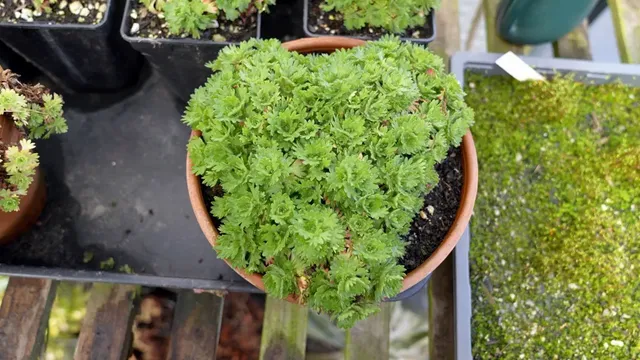
Celebrating a Decade: Rare Plant Returns Home
A plant that went extinct in the wild has been re-introduced to the UK mainland. We can’t tell you the exact location - it’s a secret, to keep it safe. It’s just one small plant but with one in six species in the UK endangered, you’ve got to start somewhere. We were there the moment pioneering horticulturist Robbie Blackhall-Miles returned it to its native soil.
I first met Robbie at his nursery for threatened plants - tucked away in a quiet part of North Wales.
What he keeps there is so valuable, he can’t even get it insured.
He asks me to be careful how much we reveal - there is still a lucrative market for rare and special plants, often picked illegally, often fetching thousands of pounds.
“There’s only 30 of those trees left in the world,” he says, pointing at a pot.
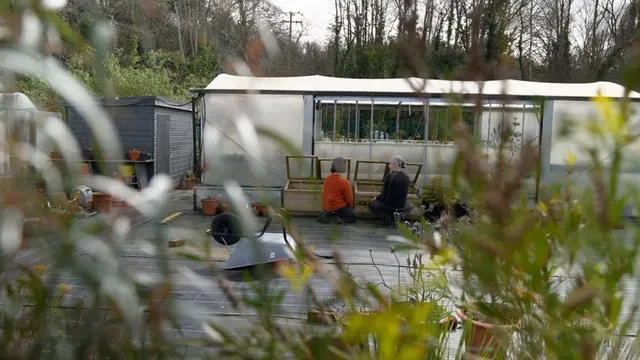
Inside the Plant Nursery with Robbie: A Passion for Botany
As we look around, there are trays filled with seedlings, bags of soil scattered on the floor, and plants of all kinds growing and flowering. Thermometers dangle from the roof, keeping a check to ensure the plants stay just right - not too hot, not too cold, and not too dry.
Robbie stands tall and fit, his enthusiasm evident in his lively conversation. When I began researching this story, Robbie's name appeared repeatedly in the records of botanical societies. There are few individuals in Britain who possess as much knowledge about plants as Robbie does.
In this bustling plant nursery, Robbie's expertise shines through as he tends to the delicate seedlings and carefully nurtures each plant. His passion for botany is palpable, and his dedication to understanding and preserving plant life is truly admirable.
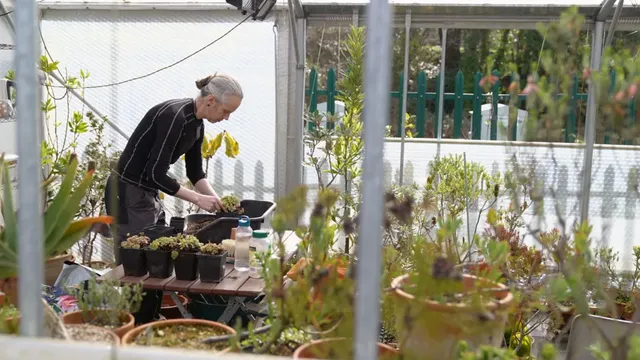
From Childhood Dreams to Conservation: Robbie's Journey in Botany
Robbie's journey into botany began with a childhood desire to save animals and a brief stint as a model. Now, he finds himself working for Plant life, a conservation charity dedicated to preserving plant species.
Reflecting on British biodiversity, Robbie likens it to a jigsaw puzzle, where each piece is crucial but some are missing. His mission, in collaboration with the National Trust and Natural Resource Wales, is to restore some of that missing diversity by reintroducing the extinct rosy saxifrage, a plant he affectionately calls a "mountain jewel," back into Eryri or Snowdonia.
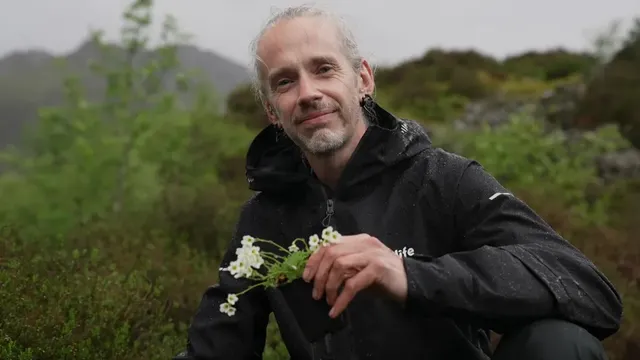
In Search of Lost Treasures: Journey to Rediscover the Rosy Saxifrage
The rosy saxifrage, last spotted in the wild in the UK back in 1962, was said to have been seen somewhere in the Cwm Idwal nature reserve in Eryri.
Curious to witness this historic site, Robbie and National Trust ranger Rhys Weldon-Roberts graciously led me and my colleague to Cwm Idwal.
Our hike followed a winding path around the lake, leading us to a place known as Twll Du, or ominously in English, Devil’s Kitchen.
Along the way, Robbie paused frequently to highlight rare plants that had managed to survive in this rugged landscape.
Coincidentally, I had ventured into this area before. Struggling to navigate through a crevice between the mountains, I had been completely unaware of the precious species thriving beneath the boulders.
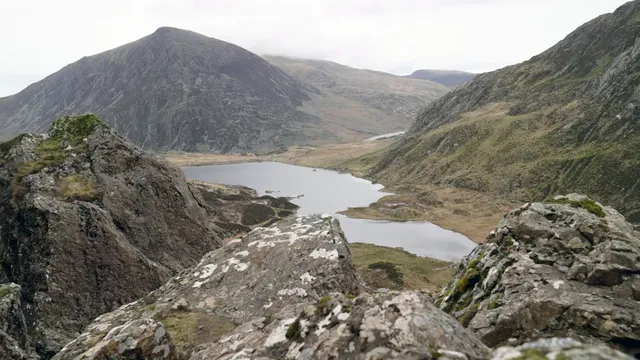
The Remarkable Journey of the Rosy Saxifrage: A Story of Hope and Conservation
Even though the rosy saxifrage is officially listed as extinct, Robbie, a skilled climber, felt compelled to double-check. "I’ve been up there on ropes, looking for it for six summers, just in case we were wrong," he shares, gesturing towards the sheer cliff faces.
"The rosy saxifrage is about as native as you can get in the UK," Robbie reflects, perched on a rock amidst the dramatic landscape.
This plant is a member of a family of mountain plants that thrived during the Ice Age when northern Britain was covered in glaciers. Even as the glaciers melted away, the saxifrages remained, flourishing in the mountainous terrain.
However, their delicate appearance and stunning flowers attracted the attention of plant collectors, especially during the Victorian era. As a result, habitat loss and poorly managed grazing in Eryri spelled doom for the plant. Its numbers dwindled until it vanished from the UK mainland.
The next part of the story has the essence of folklore. In 1962, a teacher and conservationist named Dick Roberts found a piece of a plant washed down a path while on a school trip in Cwm Idwal. He took it home, unsure of its identity, and grew it in his garden. All the rosy saxifrage plants in the UK mainland today trace back to that single specimen, saved by Dick Roberts for future generations.
About a decade ago, Robbie was entrusted with a cutting of this historic plant. "I feel quite humbled to be working with part of Dick Roberts’ legacy," he expresses gratefully.
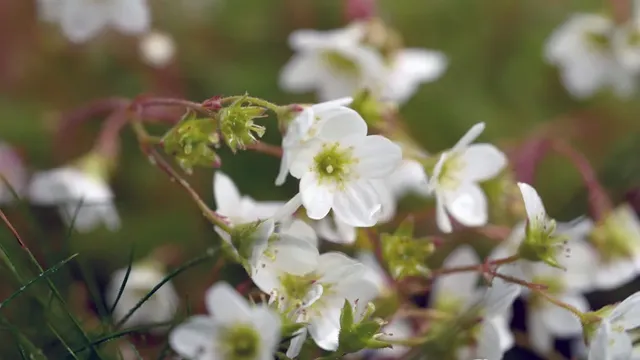
Reviving Nature: The Remarkable Tale of a Small Plant's Big Impact
It's an extraordinary feat to reintroduce a species using the genetic descendant of its native ancestor. Typically, related species are employed for such endeavours; for instance, the European beaver was enlisted to restore beavers to the UK. Yet, as Robbie holds it in his hands, he remarks, "This is from cuttings of cuttings of cuttings of that original Welsh material."
In the decades since Dick Roberts explored Eryri, the natural landscape of the UK has undergone significant transformation. Today, one in six species faces the threat of extinction, and 19% of monitored species have vanished in the past 30-40 years, rendering the UK one of the most nature-depleted nations on the planet.
To delve deeper into the significance of reintroducing this small plant, I invited Julia Jones, a conservation professor at Bangor University, to Cwm Idwal. I sought her perspective on the potential impact of bringing back this plant.
Professor Jones emphasizes that while this reintroduction alone may not revolutionize UK nature, conservation is an intricate process requiring multifaceted efforts, including safeguarding habitats from climate change, pollution, and intensive land use. However, she underscores that this reintroduction serves as a flagship initiative and "a reminder of just how much we have lost."
High-profile plant reintroductions are infrequent; most conservation efforts focus on reintroducing animals. In the UK, notable examples include the beaver and the white-tailed sea eagle—charismatic species that tend to capture public attention more than plants.
Some scientists discuss "plant blindness," suggesting that people often overlook the significance of plants in their environment, viewing them merely as background scenery despite their crucial roles in ecosystems and medicinal production.
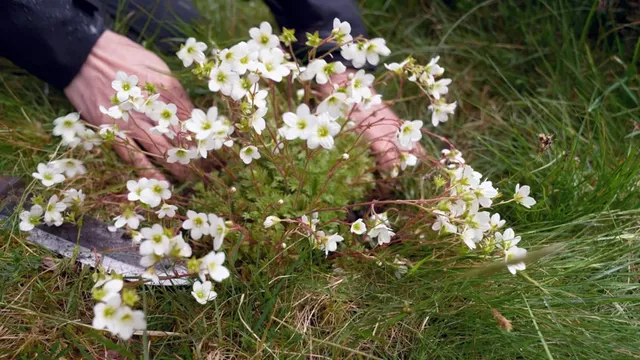
A Decade of Waiting Ends: Celebrating the Return of a Rare Plants
After ten years of anticipation, the awaited moment finally arrived a few days ago. In a secluded spot in Eryri, a small group gathered in the rain, including ranger Rhys Weldon-Roberts, tasked with safeguarding the plant from collectors.
Rhys expressed hope for a future where the plant would no longer be rare, allowing all visitors to appreciate its beauty.
For Robbie Blackhall-Miles, tasked with monitoring the saxifrage, this was a momentous occasion. After 60 years of cultivation, the question of its survival outside remained. Robbie delicately transported crates of the plant from his car.
The plant had undergone noticeable changes since Robbie last saw it - long stems now bore a white flower with five petals, a sight he adored. As he dug into the earth, encountering rocks, he remained composed, noting that "saxifrage" translates to "rock-breaker" in Latin.
In mere minutes, the precious plants were returned to their native soil. Robbie's emotions were evident; reintroducing something into his homeland, in a landscape he cherished, marked the pinnacle of his career.
"In Welsh, we have a wonderful word, afraid, meaning restitution or restoration," he shared, expressing his elation. "I'm absolutely over the moon."
This event signifies a milestone in conservation efforts, offering hope for the flourishing return of the plant.